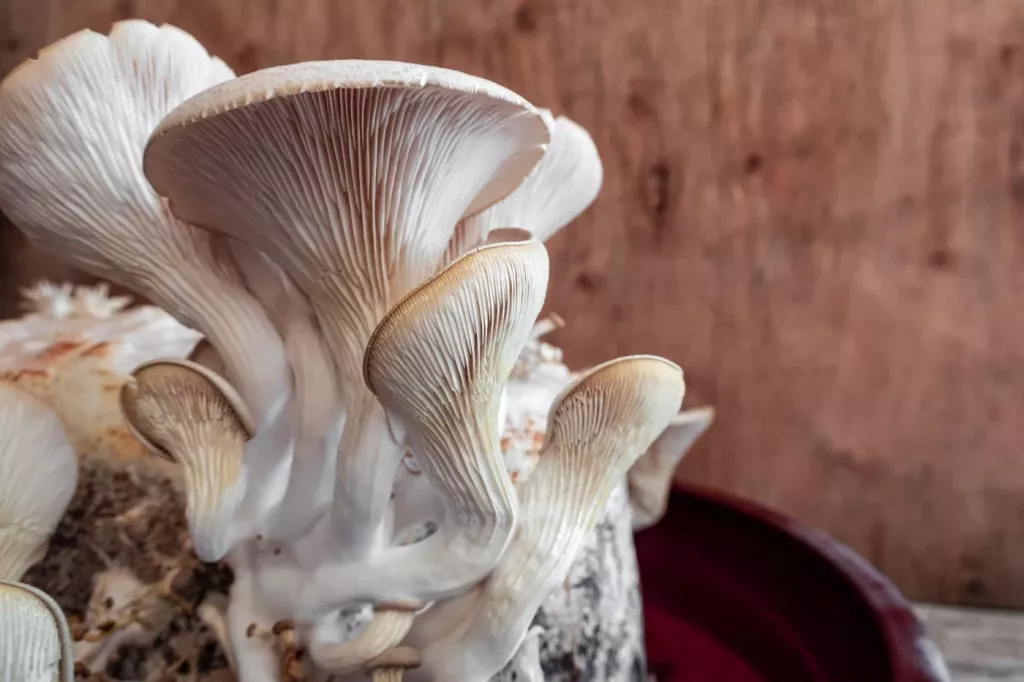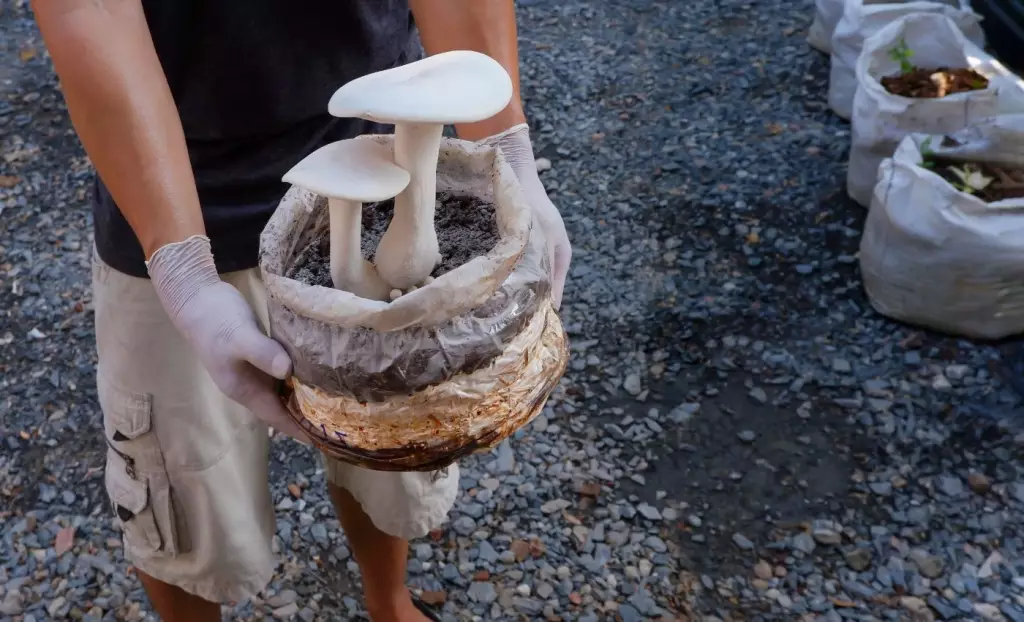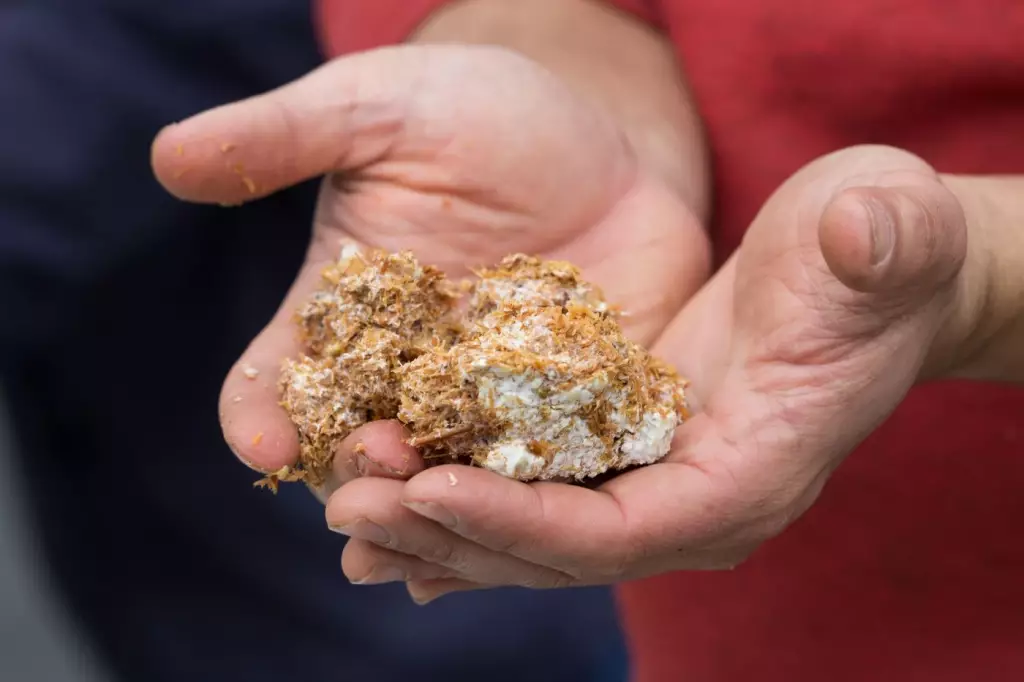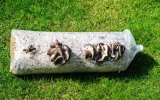Can You Add Fertilizer to Mushroom Substrate & How Much?
One critical aspect to consider in mushroom cultivation is the nutrient content of the substrate. You may be wondering if you can add fertilizer to your mushroom substrate, and if so, how much you should use. The type and amount of fertilizer you use will depend on the specific mushroom species you're growing and the substrate you're working with. For example, a popular substrate choice like coffee grounds can be mixed with mushroom spawn, optionally adding some straw for better air exchange and faster colonization.
You can add fertilizer to your mushroom substrate carefully and in moderation. Aim for a substrate with 1-2% nitrogen as well as trace amounts of magnesium, phosphorus, sulfur, potassium, and calcium. Keep in mind that the moisture content should be between 50 and 70% and the pH should be slightly acidic (5–6.5).
When adding fertilizer to your mushroom substrate, it’s best to mix it evenly throughout the substrate rather than applying it directly on top. This will help ensure that the nutrients are well distributed and easily accessible to the developing mycelium. Let's dive deeper into the various types of fertilizers and their effects on mushroom growth, as well as provide guidance on how much fertilizer to add to your substrate.
Summary
- You can add fertilizer to your mushroom substrate to improve its nutrient content. Mushrooms have different nutrient requirements than plants, so it's not just about adding "more"; it's about creating the right balance of nutrients for the specific species.
- To ensure you're using the right type of fertilizer and the proper amount, start by determining your mushroom species' preferred substrate and the necessary nutrients. Some species may need a higher nitrogen content, while others might require additional minerals such as phosphorus or potassium.
- As your mushrooms grow, monitor their health and adjust your fertilization strategy if necessary. If you observe symptoms such as slow growth, weak fruiting bodies, or discoloration, you may need to refine your fertilizer blend or application rates.

On this page:
The Right Amount of Fertilizer to Add to Mushroom Substrate
When it comes to mushroom farming, it's essential to determine the right amount of fertilizer to add to your substrate. Achieving this balance will promote healthy mushroom growth while keeping the nutrients at an optimal level.
First, you should know that a 10-10-10 fertilizer is commonly used for mushroom growth as it contains 10% nitrogen, 10% phosphorus, and 10% potassium. The amount of fertilizer you'll need depends on the size of your mushroom bed. A general rule of thumb is to apply 1 pound of fertilizer per 100 square feet of bed.
To calculate the amount of fertilizer you need for a specific area, consider the following steps:
- Measure the area of your mushroom bed in square feet.
- Divide the area by 100 to determine how many units of fertilizer are needed.
- Multiply the number of units by the fertilizer's weight per unit (1 pound).
For example, if your mushroom bed measures 250 square feet:
- 250 square feet / 100 = 2.5 units of fertilizer
- 2.5 units * 1 pound = 2.5 pounds of 10-10-10 fertilizer
If you're using other types of fertilizers with different nutrient ratios, you might need to adjust your calculations accordingly. The UMass Center for Agriculture provides a useful guide on calculating fertilizer applications based on different nutrient contents.
When preparing your mushroom substrate, you may also consider the water content. A general guideline is that the substrate should not have excess water pooling at the bottom. When you squeeze the substrate lightly, no water should come out.
Here's How to Add Fertilizer to Substrate

Preparation stage
The primary goal of adding fertilizer to your mushroom substrate is to provide the necessary nutrients for your mushrooms to grow and thrive. Start by selecting a suitable fertilizer, such as gypsum, which is a commonly used mushroom substrate supplement. It is recommended to use a ratio of 1:25 gypsum to the total weight of your bulk substrate.
- Weigh out the appropriate amount of gypsum based on your substrate's weight.
- Thoroughly mix the gypsum into your substrate. This will ensure an even distribution of nutrients throughout the substrate.
Spawn run stage
During the spawn run stage, the mushroom mycelium colonizes the substrate, breaking down the nutrients provided by the fertilizer. Here are some tips to ensure the best results:
- Maintain optimal temperature and humidity levels for your mushroom species.
- Monitor the substrate for any signs of contamination and remove it if necessary.
Fruiting stage
As the mycelium reaches full colonization of the substrate, it's time to start the fruiting stage. During this phase, your mushroom will use the nutrients from the substrate to produce fruiting bodies (mushrooms). Ensure the following conditions are met to achieve successful fruiting:
- Provide adequate fresh air exchange and maintain optimal humidity levels for your mushroom species.
- Harvest the mushrooms when they reach maturity, typically when the caps start to flatten or curl up.
Types of Fertilizers for Mushroom Substrate

In this section, we will discuss the types of fertilizers that can be added to mushroom substrate and the appropriate amounts to use. There are two main categories of fertilizers suitable for mushroom substrate: organic and inorganic.
Organic fertilizers
Organic fertilizers are derived from naturally occurring materials, such as plant and animal sources. They can provide essential nutrients and significantly boost the growth of your mushrooms. Some examples of organic fertilizers include:
- Spent mushroom substrate: This soil-like material is left behind after a mushroom crop and can be used as a soil conditioner. It's high in organic matter and can be an excellent addition to your mushroom substrate.
- Composted manure: Well-aged and composted manure from herbivorous animals can serve as an excellent mushroom substrate amendment. Just make sure the manure is pasteurized to kill any pathogens and weed seeds. This can be done by heating the manure to at least 160 degrees Fahrenheit for a few days.
- Straw: Straw can be used as an organic amendment after it has been pasteurized. Simply submerge the straw in 160-degree water for an hour to kill any pathogens.
Organic fertilizers may need to be thoroughly mixed into your substrate to create an even distribution of nutrients.
Inorganic fertilizers
Inorganic fertilizers are synthetically produced and can provide essential nutrients to your mushroom substrate. Some commonly used inorganic fertilizers for mushroom cultivation include:
- Liquid nitrogen: This fertilizer is great for growing mushrooms on a substrate, as it helps keep the substrate moist and nutrient-rich. The pasteurization process of liquid nitrogen also kills bacteria and mold, making it a clean and effective option.
- Urea: A nitrogen-rich fertilizer, urea can provide a nutrient boost for your mushrooms. Use it in moderation, as excessive amounts of nitrogen can lead to imbalances in the substrate.
- Superphosphate: This phosphorus-rich fertilizer can promote healthy mushroom growth. Use it sparingly, as too much phosphorus can also lead to imbalances in your substrate.
When using inorganic fertilizers, it's important to measure the appropriate amounts carefully and follow the manufacturer's instructions to avoid overfertilizing your substrate.
Potential Risks and Precautions when Adding Fertilizer to Mushroom Substrate

Firstly, using excessive amounts of fertilizer can lead to contamination issues in your mushroom substrate. Contaminants, such as molds and bacteria, can thrive in nutrient-rich environments, outcompeting your mushrooms and causing crop failure.
To prevent this, ensure that you don't over-fertilize your substrate and follow the recommended guidelines for fertilizer application. Moreover, make sure your substrate is properly pasteurized to reduce the potential for contamination.
Another risk is altering the substrate's pH levels. When fertilizing your substrate, ensure that the added fertilizer doesn't drastically change the pH, as mushrooms prefer a specific pH range for optimal growth. Monitoring and adjusting the pH levels as needed will contribute to a successful and healthy mushroom yield.
In addition to managing the pH, you should also consider the nutritional needs of the specific mushroom species you are cultivating. Different mushrooms have different requirements, so it's essential to tailor your fertilizer choice and quantity to the needs of your crop. Utilize resources, such as books and online guides, to learn about the specific requirements of the mushrooms you are growing.
Furthermore, remember that mushroom substrate is often used as a soil amendment or conditioner after the mushroom crop is harvested. Consequently, excessive fertilizer application could negatively impact the soil's quality when the spent substrate is applied to it, potentially hindering future plant growth in the soil.
Finally, always take the necessary precautions when handling fertilizers and chemicals. Wear proper gloves, eye protection, and a mask as needed. Follow the safety recommendations provided by the fertilizer manufacturer to ensure safe and effective use.



